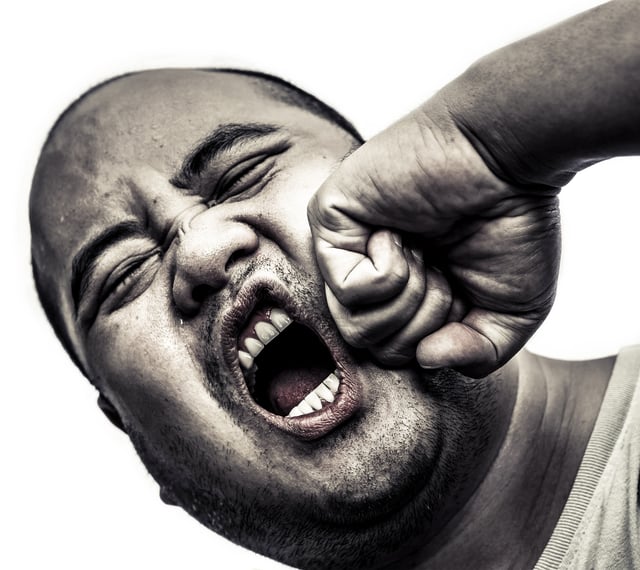Share this
Corrective jaw surgery for facial deformities due to trauma
on January 22, 2016

Corrective jaw surgery is commonly done for dentofacial disharmonies that developed due to disproportional growth. As such, most jaw surgery patients are young, ranging from late teens to twenties. However, there is another group of patients whose dentofacial deformities are acquired due to trauma. This can happen when someone trips and falls on his face or it an also be due to sports. More serious deformities can occur through road traffic accidents. The surgeon who does that primary repair of these injuries usually does not have the luxury of doing a thorough discussion with the patient about aesthetics. The patient usually is in pain and just wants to have the injuries treated. Trauma to the face also causes a lot of swelling which obscures the true appearance of the face. As such, the initial treatment of facial injuries may not achieve good aesthetics and function. Corrective jaw surgery may be needed in some cases to rectify the residual deformity.
The assessment of traumatic facial deformities is generally the same as the developmental ones. However, several other factors are critical too. The nature of the accident, ie was it is a car accident, a sports injury, etc. The length of time since the accident also plays a role in the decision making process. The initial surgery that was done will also impact the final treatment options available.
Some of the common problems encountered are:
- Functional deficit
- Misalignment of the jaw: The jaw fragments may have been mis-aligned during the initial reduction of the fracture. As a result, the teeth are not meeting properly and the patient cannot bite.
- Limited mouth opening: sometimes, injuries to the jaw joint may be missed or underestimated in the initial assessment. There may be bleeding around the joint that eventually forms a clot that restricts the movement of the joint and hence limits mouth opening. If only one joint is affected, this may manifest as deviation of the lower jaw to one side when opening
- Numbness of the face: The jaw bone contains sensory nerves that provide sensation to the overlying skin. These nerves may be damaged when the bones fracture resulting in a sensory deficit.
- Aesthetic problem
- Anterior open bite: When the condyles of the lower jaw fracture on both left and right side, the back of the lower jaw tends to be pulled upwards by the strong muscles that are attached, causing a downward rotation of the jaw. This creates an an open bite in front which makes the patient look like his mouth is always open. In addition to the functional problem of being unable to bite using his front teeth, it is also unaesthetic.
- Asymmetry: If both the upper and lower jaws are fractured, there is no reliable reference structure to rebuild the facial bones at the initial surgery. Coupled with the facial swelling, assessment of proportion and symmetry is challenging to say the least. When the jaws are reconstructed at that time, some asymmetry may be missed during the surgery but will become obvious once the swelling subsides. This can manifest as one side of the jaw being longer than other, resulting in the chin being position left or right of centre. It can also be due to one side of the upper jaw being fixed at a higher level than the other, resulting one side of the face being shorted than the other.
- Flat face: If the injury is due to direct frontal trauma to the face such as falling flat on the face or sustaining a direct frontal trauma to the face, the fracture of the jaws can occur in the midline, thereby flattening the face ie making it broader when viewed frontally and flatter on profile view, somewhat akin to opening a book. This is difficult to pick up during the initial surgery due to a lack of reference points.
Surgery:
Depending on the extent of the residual deformity and how badly it affects function, the patient may choose to undergo surgery to correct them or to accept the defects. Corrective surgery is not without risks and the patient needs to be apprised of the downside. Like any other surgery, the benefit must outweigh the risks.
Patients with mis-alignment of the jaws and asymmetry can be managed just like in orthognathic surgery whereby a CT scan is done and the planning done on computer programs. Models of the teeth need to be made and the usual model surgery is done in the laboratory to determine the correct position.
Anterior open bites are a bit more tricky. The usual way to correct anterior open bite is to impact the back of the upper jaw upwards so that the back teeth are repositioned higher, allowing the lower jaw to close. However, in traumatic deformities, the open bite is a result of the shortening of the condylar neck/ramus (vertical part) of the lower jaw and not excessive growth of the back part of the upper jaw. Depending on the overall aesthetic demand, the open can be corrected by impacting the upper jaw like in conventional orthognathic surgery or by lengthening the ramus or reconstructing the condylar neck. The latter option if more complicated but is preferred if the patient wants to restore his facial height to pre-injury dimensions.
The initial trauma may have resulted in loss of bone fragments. In reconstructive surgery of the jaw, bone grafting may be needed to restore the dimensions of the jaws to its original state. Bone is usually taken from the hip bone and grafted to the deficient sites.
Conclusion..
Traumatic deformities can be managed like conventional dentofacial deformities using orthognathic surgery techniques. Without the constraint of time imposed at the initial trauma surgery, a better result can be achieved both functionally and cosmetically during secondary surgery. Some times, reconstructive techniques such as bone grafting are needed to restore normal anatomy and function.
Share this
- Jaw Surgery (93)
- Dental Implants Singapore (90)
- Orthognathic Surgery (48)
- Replacing Missing Teeth (26)
- Missing Teeth Options (23)
- Underbite (23)
- Bone Grafting (21)
- Costs (18)
- Facial Aesthetics (18)
- Aesthetics (17)
- dental implants (16)
- corrective jaw surgery (15)
- BOTOX (11)
- Dermal Fillers (11)
- Wisdom teeth (10)
- Fixed Implant Dentures (8)
- Loose Dentures Singapore (6)
- Medisave (6)
- sleep apnea (6)
- Braces (5)
- Dental Pain (5)
- Dentures in Singapore (5)
- Loose Teeth (5)
- Tooth Extraction (5)
- jaw deformities (5)
- bimax (4)
- bone graft (4)
- maxillomandibular advancement (4)
- all-on-4 (3)
- bimaxillary protrusion (3)
- chin implant (3)
- facial asymmetry (3)
- full mouth dental implants (3)
- genioplasty (3)
- immediate implant (3)
- removal of an integrated dental implant (3)
- third molars (3)
- wisdom tooth surgery (3)
- My Dentures Don't Fit (2)
- VME (2)
- bone graft healing (2)
- distraction osteogenesis (2)
- medical tourism (2)
- obstructive sleep apnea (2)
- orthodontics (2)
- plastic surgery (2)
- CT guided dental implants (1)
- Double jaw surgery (1)
- Invisalign (1)
- Periodontal Disease (1)
- Permanent Dentures Singapore (1)
- before and after photos (1)
- facial trauma (1)
- fractured dental implant (1)
- oral appliance therapy (1)
- root canal treatment (1)
- veneers (1)
- vertical maxillary excess (1)
- September 2019 (2)
- July 2019 (2)
- May 2019 (2)
- August 2018 (1)
- October 2017 (1)
- September 2017 (2)
- August 2017 (1)
- June 2017 (2)
- May 2017 (4)
- April 2017 (1)
- March 2017 (1)
- February 2017 (3)
- January 2017 (3)
- December 2016 (1)
- November 2016 (2)
- October 2016 (4)
- September 2016 (9)
- August 2016 (5)
- July 2016 (11)
- June 2016 (14)
- May 2016 (6)
- April 2016 (2)
- March 2016 (1)
- January 2016 (7)
- December 2015 (10)
- November 2015 (4)
- October 2015 (9)
- September 2015 (7)
- August 2015 (1)
- July 2015 (6)
- June 2015 (3)
- May 2015 (7)
- April 2015 (5)
- March 2015 (8)
- January 2015 (5)
- December 2014 (7)
- November 2014 (7)
- October 2014 (6)
- September 2014 (8)
- August 2014 (5)
- July 2014 (7)
- June 2014 (8)
- May 2014 (9)
- April 2014 (10)
- March 2014 (6)
- February 2014 (8)
- January 2014 (3)
Subscribe by email
Email subscription




No Comments Yet
Let us know what you think